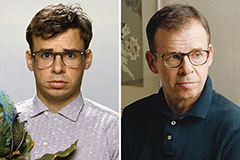Extended Reach, Same Superior Quality
Renowned for its dedication to excellence, MyCigarsASAP.com brings a select collection of premium cigars from celebrated brands in the industry. With the expansion into West Hollywood, the company continues to provide rapid access to a comprehensive range of luxury cigars, sustaining the same rigorous quality control standards that have made it a reliable choice among cigar enthusiasts.
Cigar Delivery West Hollywood
CALL (800) 654-7959
Patrons in West Hollywood can choose from popular brands such as: • Arturo Fuente – Presenting a versatile selection of finely handmade cigars. • Montecristo – Famous for its smooth, well-rounded blends that cater to multiple flavor preferences. • Cohiba – Recognized globally for delivering a robust, potent smoking experience. • Davidoff – A mark of luxury, providing cigars of unsurpassed consistency and caliber. • My Father's Cigars – Supplying strong, rich tastes that are influenced by Cuban cigar craftsmanship. • Ashton – Famous for its velvety, graceful flavor, made from the highest quality Dominican-sourced tobaccos. • Padron – Acclaimed for its bold tastes and superb craftsmanship, including the in-demand 1964 Anniversary Series. • Romeo y Julieta – A traditional favorite recognized for its balanced flavors and steady quality.
This broad array ensures that MyCigarsASAP.com satisfies a broad array of tastes, with cigars originating from reputable regions like Nicaragua, the Dominican Republic, and Honduras.
Attention to Freshness and Perfection
Superiority is at the core of MyCigarsASAP.com’s activities. To assure that each cigar is delivered in pristine condition, the company employs meticulous quality control protocols, including carefully monitored storage and meticulously chosen inventory. Every consignment is processed with attention, guaranteeing that the cigars are supplied fresh and flavorful. Moreover, their team of cigar professionals is available to deliver personalized suggestions, making sure every customer's experience is both personalized and informative.
Fast and Convenient Delivery to West Hollywood
With the addition of this service area, MyCigarsASAP.com reinforces its standing as one of the speediest premium cigar delivery services locally. Whether for a instant celebration, a planned event, or a simple evening of relaxation, residents in West Hollywood can now take pleasure in efficient cigar deliveries within 30 to 60 minutes of placing an order. This prompt service introduces a enhanced ease to West Hollywood’s cigar enthusiasts.
Cigar Delivery West Hollywood
CALL (800) 654-7959
About MyCigarsASAP.com
MyCigarsASAP.com is a LA-based cigar delivery service devoted to offering quick, trustworthy access to a luxury assortment of cigars. With a priority on quality, freshness, and personalized service, the company has earned a reputation as a trusted source for cigar lovers across the region. Now, with enlarged service to West Hollywood, MyCigarsASAP.com keeps at the forefront of delivering luxury cigars with speed and precision.
For more insight or to make an order for instant delivery, call (800) 654-7959.
Cigar Roots and Background: A Journey Through Ages
Cigars, often affiliated with luxury, custom, and mastery, encapsulate a abundant history dating back hundreds of years. The development of cigars represents the fusion of ethnicities, adventure, and trade dealings. This write-up studies the compelling foundation and chronicle of cigars, tracking their progression from aboriginal practices in the Americas to evolving into a worldwide icon of sophistication.
The Primeval Dawn: Cigars in Pre-Columbian Cultures Cigars have their earliest roots in the indigenous traditions of the Americas. Age-old cultures, including the Mayans, Aztecs, and Taínos, are recognized to have smoked coiled tobacco blades. Historical relics uncover images of Mayans puffing on earthenware items belonging to no later than the 10th century. The word “cigar” presumably originates from the Mayan designation “sikar,” which translates to to smoke.
In these historic societies, tobacco was not only a casual product but also held divine significance. Medicine men and tribal leaders enjoyed tobacco during ceremonial customs, thinking it allowed them to converse with the spirit world. Tobacco was also used curatively, offering mitigation for various disorders, such as migraines and intestinal issues.
Tobacco’s Introduction to Europe: Columbus and the New World The European chronicle of cigars initiated with Christopher Columbus’s arrival in the Americas in 1492. His crew found original people puffing rolls of cured tobacco blades, an alien practice that intrigued them. Columbus and his men carried portions back to Spain, marking the commencement of Europe’s interaction with tobacco.
The practice of smoking quickly expanded across Europe. Spaniards accepted it first, and by the 16th century, tobacco use transformed into popular among European gentry. Early cigars were unsophisticated compared to modern versions, but their appeal extended to Italy, Portugal, and France. Tobacco was also viewed as an elixir, considered to remedy a number of conditions from flu to exhaustion.
Cuban Influence: Birthplace of the Modern Cigar Cuba’s influence in cigar legacy is crucial, converting tobacco from a domestic commodity into a universal phenomenon. In the 17th century, Cuba evolved into the hub of cigar manufacturing due to its ideal climate and fruitful soil, particularly in the Vuelta Abajo region. Cuban cigars quickly obtained a standing for unequaled quality and skill.
By the 1800s, the Cuban cigar industry was flourishing, and the term “Havana cigar” emerged as synonymous with excellence. Proficient artisans, known as torcedores, produced cigars by hand, refining techniques that prevail largely unchanged today. Many of the world’s most legendary cigar brands, such as Montecristo, Cohiba, and Romeo y Julieta, attribute their origins to this era.
The Enlargement to North America and Europe The appetite for cigar s grew beyond Cuba’s borders by the 18th and 19th centuries. Tobacco plantations emerged developing in other Caribbean islands, such as the Dominican Republic and Jamaica, as well as parts of Central America, including Honduras and Nicaragua. These regions remain cigar titans today, each bringing singular characteristics to their products.
In Europe, Spain and the Netherlands evolved into prominent consumers and producers of cigars. The Dutch set up a robust cigar industry, importing Cuban tobacco and fusing it with domestic leaves to form distinct styles. Meanwhile, cigar enjoyment in the United States became affiliated with status and masculinity. The rise of industrialization saw cigar factories grow across the U.S., particularly in Florida, where Cuban immigrants transferred their artistry and traditions.
Cigars and Social Status: From Aristocracy to the Everyday Man Throughout legacy, cigars have been closely tied to status, wealth, and celebration. By the 19th century, cigars were a fixture among European and American aristocrats. Monarchs such as King Edward VII of England were well-known cigar devotees, further boosting their popularity among the elite.
In the United States, cigars became connected to political power and business success. Industrial magnates like Andrew Carnegie and John D. Rockefeller were often portrayed smoking cigars, strengthening their image as representations of wealth. Prominent figures such as Winston Churchill famously championed cigars, contributing to their prestige.
However, cigars were not restricted to the upper class. The growth of the cigar industry led to the fabrication of reasonably priced options, making cigars accessible to the working class. Cigar clubs and lounges appeared, offering venues where people from all walks of life could partake in a smoke.
The Cuban Embargo and the Rise of New Markets The Cuban cigar industry met a major transformation in 1962 when the U.S. government, under President John F. Kennedy, imposed a trade embargo on Cuba. Cuban cigars, previously a staple among American cigar aficionados, became illegal in the U.S., creating both shortage and aura around them. As a result, many Cuban cigar makers escaped to neighboring countries like the Dominican Republic, Nicaragua, and Honduras, where they continued their art using Cuban-seed tobacco.
This geopolitical transition established new markets and helped to the rise of premium cigars outside Cuba. Today, cigars from these regions are esteemed for their quality, challenging Cuban cigars in flavor, construction, and diversity.
Cigars in Popular Culture and Cinema Cigars have confirmed their place in popular culture, often signifying power, victory, and sophistication. Hollywood endorsed the cigar as an icon, featuring it prominently in films. Characters like Tony Montana in Scarface and Winston Churchill in The Darkest Hour continue the tie between cigars and authority.
Moreover, cigars are a regular at celebrations, marking occasions such as weddings, business deals, and the birth of children. Cigar lounges and clubs continue to serve as venues for socializing and networking, reinforcing their cultural relevance.
The Modern Cigar Renaissance The late 20th and early 21st centuries have seen a reawakening of cigar culture. The 1990s “Cigar Boom” in the U.S. saw a reinvigorated interest in premium cigars, with new aficionados joining the scene. Mastery, diversity in blends, and handcrafted techniques have stimulated the modern cigar renaissance.
Specialty cigar brands have attracted popularity, offering particular blends that engage to a rising demographic of younger smokers. Additionally, the rise of cigar lounges and online cigar shops has made it easier for consumers to experience different varieties from around the world. Events like Cigar Aficionado’s Big Smoke further demonstrate the continuing draw of cigars in contemporary culture.
Cigars and Sustainability: The Future of the Industry As the cigar industry advances, sustainability has become a key issue. Environmental factors, including climate change and deforestation, affect tobacco cultivation. Many cigar manufacturers are employing eco-friendly practices by using sustainable farming methods and promoting reforestation efforts.
Fair labor practices are also increasing, with companies assuring fair wages and safe working conditions for the farmers and artisans involved in cigar production. The focus on sustainability strives to conserve the industry’s legacy while meeting the expectations of socially conscious consumers.
Conclusion: A Legacy of Tradition and Craftsmanship From the spiritual traditions of indigenous tribes to the sumptuous lounges of today, cigars have traveled a long and legendary path. Each drag of a premium cigar encapsulates with it the legacy of generations of craftsmanship, tradition, and cultural significance. Whether savored by royalty, industrial tycoons, or modern-day connoisseurs, cigars continue to stand for more than just tobacco—they represent a lifestyle, a celebration, and a link to history.
As the world of cigars develops, one thing persists constant: the fascination of taking it easy, lighting up, and indulging in the artful combination of tradition and innovation enveloped in each leaf.
The Cigar Creation Approach: A Trip from Bygone Times to Now
A Cigar Manufacturing Process: A Journey from Past to Present
Introduction
The cigar, a timeless symbol of opulence and refinement, has a rich history that spans centuries and continents. From its early origins among indigenous peoples to its modern incarnation as a global industry, the process of crafting a cigar is the blend of technique, research, and tradition. This article scrutinizes the intricate journey of cigar manufacturing, differentiating the methods of the past with those of today, and illuminating how innovation and heritage merge in this absorbing craft.
I. Historical Overview of Cigar Manufacturing
A. Early Origins of Cigars
The history of cigars originates to the indigenous peoples of the Caribbean and Mesoamerica, who raised tobacco and used it in religious and medicinal practices. this content When Christopher Columbus arrived in the New World in 1492, he and his crew witnessed the native Taíno people of Cuba and Hispaniola forming and smoking dried tobacco leaves. This practice captivated the Europeans, who imported tobacco back to the Old World, where it quickly acquired popularity.
B. Traditional Cigar-Making Techniques
1. Tobacco Cultivation
In the early days, tobacco cultivation was an manual and labor-intensive process. Farmers trusted natural cycles and traditional knowledge to grow tobacco plants. The seeds were transplanted by hand, and the plants demanded meticulous care to thrive.
2. Leaf Selection and Fermentation
After harvesting, the tobacco leaves underwent a natural air-curing process. They were positioned in curing barns to dry slowly, granting the chlorophyll to break down and the leaves to acquire their characteristic brown color. Fermentation followed, where the leaves were placed in piles called pilones. The natural heat generated by microbial activity diminished harshness and enhanced the rich flavors.
3. Rolling Methods
Cigar rolling was the craft handed down through generations. Skilled artisans, known as torcedores, assembled cigars entirely by hand. They picked filler leaves, joined them with a binder leaf, and covered the bunch with a high-quality wrapper leaf. This meticulous process entailed precision and an eye for quality.
C. The Role of Cuban Cigar Tradition
Cuba became linked with premium cigars due to its ideal climate and soil conditions, particularly in the Vuelta Abajo region. The country's cigar-making techniques created the standard for quality and craftsmanship. Cuban cigars were widely desired, and the methods developed there shaped cigar production worldwide.
II. Modern Cigar Manufacturing Process
A. Advances in Tobacco Cultivation
1. Genetic Selection
Modern agriculture has integrated genetic selection to refine tobacco plant qualities. Scientists and farmers work together to develop tobacco strains resistant to diseases and pests, and with desired flavor profiles. This creates more consistent and high-quality crops.
2. Modern Farming Techniques
Today, tobacco farming applies advanced irrigation systems, soil management, and crop rotation to maximize yield and quality. Precision agriculture technologies, such as GPS mapping and drones, enable monitor plant health and optimize resource use.
B. Leaf Processing Today
1. Fermentation Methods
While the fundamental principles of fermentation stay, modern facilities regulate temperature and humidity with greater precision. This control affirms uniformity and boosts flavor development. Some producers use multiple fermentation cycles to refine the tobacco further.
2. Aging and Storage
Post-fermentation aging has transformed into a critical step. Tobacco leaves are aged in controlled environments, sometimes for several years, to mellow the tobacco and refine complexity. Aging rooms are equipped with technology to preserve ideal conditions.
C. Contemporary Cigar Rolling
1. Machine-Made vs. Hand-Rolled Cigars
The 20th century experienced mechanization to cigar production. Machine-made cigars adopt homogenized tobacco leaf (HTL) binders and wrappers, granting mass production at lower costs. However, premium cigars last to be hand-rolled, protecting the artisanal tradition.
2. Quality Control
Modern factories carry out strict quality control measures. This includes regular inspections, draw testing to validate proper airflow, and sensory evaluations. Technology enhances but does not supersede the expertise of seasoned inspectors.
D. Innovations in Packaging and Distribution
Advancements in packaging materials safeguard cigars from environmental factors during shipping. Vacuum-sealed packaging, humidification devices, and sophisticated distribution logistics provide cigars reach consumers in optimal condition.
III. Comparing Past and Present Methods
A. Technological Advances
Technology has improved many aspects of cigar manufacturing without undermining the importance of skilled labor. Mechanization handles repetitive tasks, while artisans focus on quality and craftsmanship.
B. Maintaining Tradition in a Modern Industry
Despite technological progress, the essence of cigar-making remains rooted in tradition. Many producers focus on hand-rolled methods and traditional fermentation to sustain authenticity and meet the needs of aficionados who appreciate heritage.
C. Challenges and Opportunities
The industry faces challenges like regulatory changes, health concerns, and market fluctuations. However, opportunities come up from expanding global markets, premiumization trends, and consumer interest in artisanal products.
IV. The Art of Cigar Making: Preserving Craftsmanship
A. The Role of the Torcedor (Cigar Roller)
Torcedores are revered figures in cigar factories. Their expertise governs the cigar's construction and performance. Training to become a master roller can take years, illustrating the complexity of the craft.
B. Apprenticeship and Skills Transfer
Many factories manage apprenticeship programs to transfer skills to new generations. This provides the survival of traditional techniques and Same day cigar delivery West Hollywood preserves high standards in production.
C. Cultural Significance
Cigar-making is more than a business; it's a cultural heritage in regions like Cuba, the Dominican Republic, and Nicaragua. Festivals, museums, and tours mark this legacy, drawing enthusiasts worldwide.
The cigar manufacturing process is the captivating blend of time-honored traditions and modern innovations. While technology has implemented efficiencies and consistency, the heart of cigar-making exists in the hands of skilled artisans who maintain a legacy that spans centuries. Recognizing this journey enhances the appreciation of cigars, not just as products but as personifications of cultural heritage and craftsmanship.
 Rick Moranis Then & Now!
Rick Moranis Then & Now! Devin Ratray Then & Now!
Devin Ratray Then & Now! Tonya Harding Then & Now!
Tonya Harding Then & Now! Jaclyn Smith Then & Now!
Jaclyn Smith Then & Now! Ryan Phillippe Then & Now!
Ryan Phillippe Then & Now!